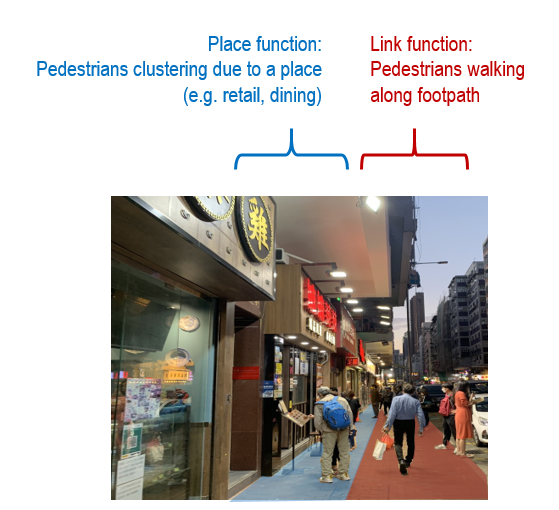1. Background
To develop Hong Kong into a walkable city, we have formulated the overall walkability strategy for Hong Kong which places high priority on pedestrians in transport planning to foster a pedestrian-friendly environment and promotes walking as a form of sustainable urban mobility bringing about transport, social, environmental, economic and health benefits in line with the "Walk in HK" initiative.
Under the overall walkability strategy, we have devised new walkability enhancement initiatives/ measures, namely wayfinding signage, decluttering of non-essential traffic signs and railings, raised crossing, levelled run-in/out and low speed limit zone in selected locations, as well as a new comprehensive pedestrian planning framework to promote walking under four pillars of walkability, i.e. "make it connected", "make it safe", "make it enjoyable" and "make it smart".
Besides, in order to provide more comfortable pedestrian connections to destinations, we have also been providing covers for walkways to public transport facilities and public hospitals where appropriate under the scheme of "Provision of Cover to Walkway".
2. New Walkability Enhancement Measures
Wayfinding Signage
An informative, user-friendly and consistent wayfinding system helps pedestrians better plan their journey. We showcased from mid-2022 a new pedestrian wayfinding signage system which suits the local urban context at locations in Central, Wan Chai, Causeway Bay, West Kowloon near Tsim Sha Tsui and Sham Shui Po. We are reviewing the strategy for territory-wide implementation of the system.
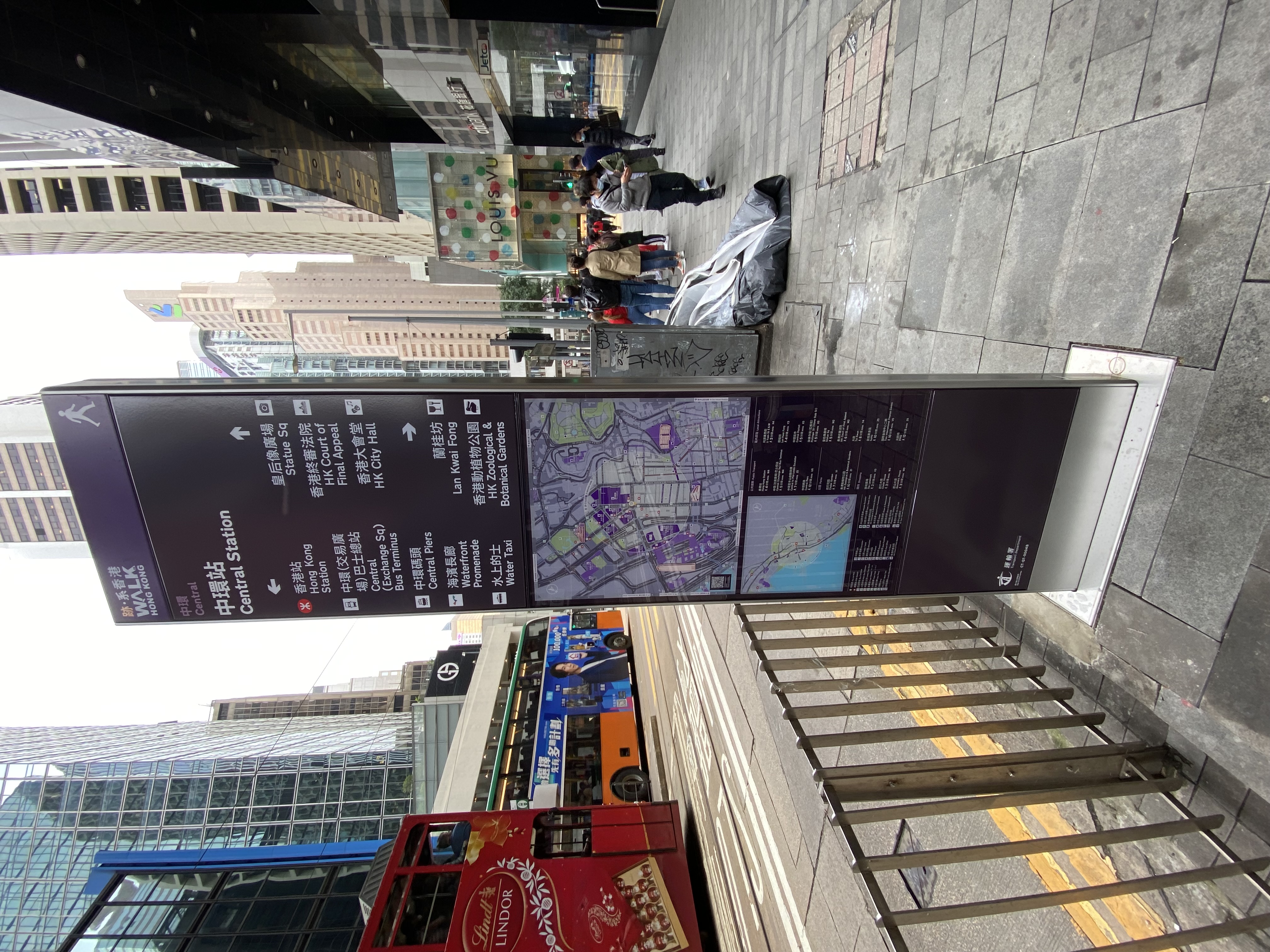 |
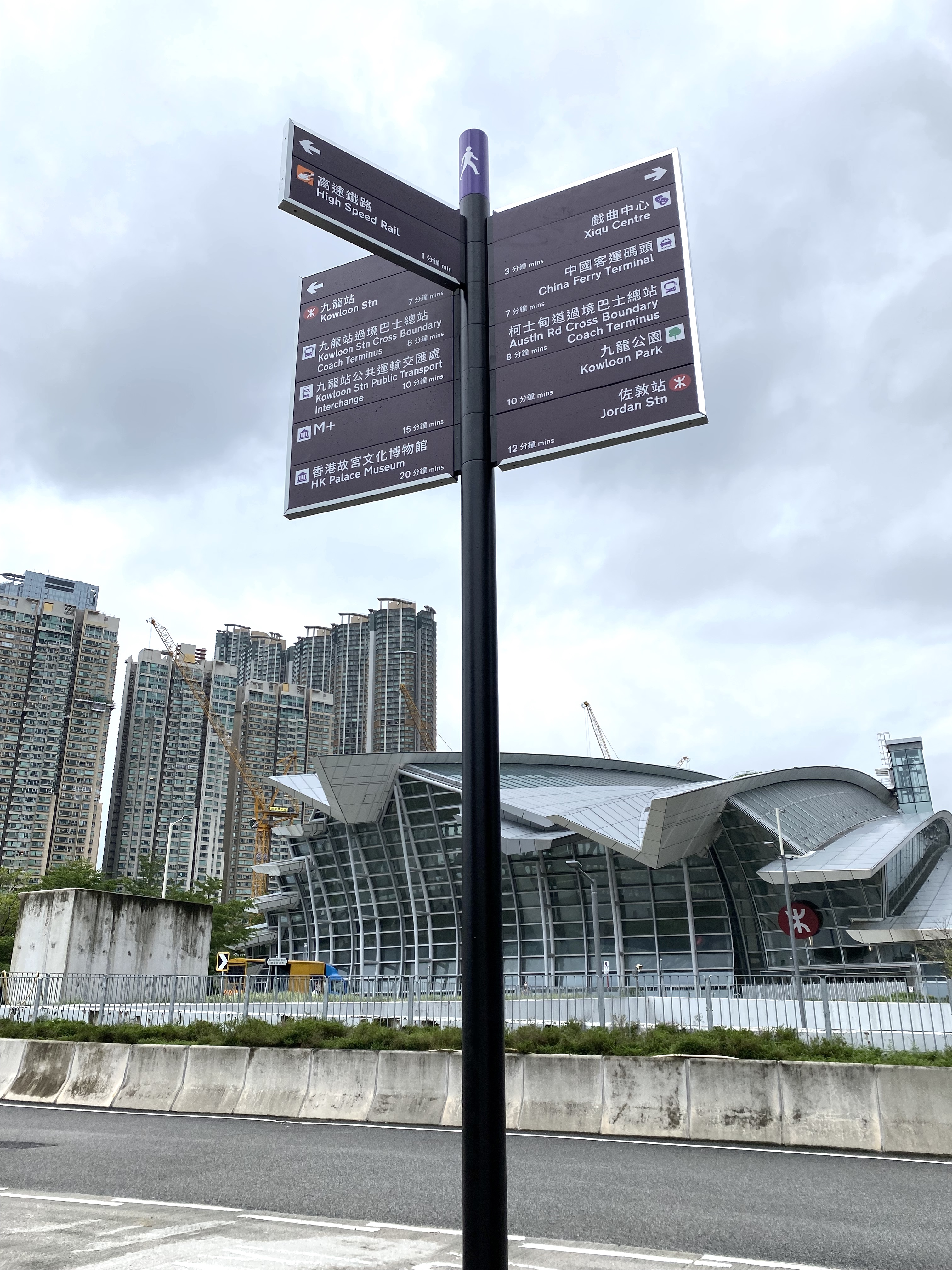 |
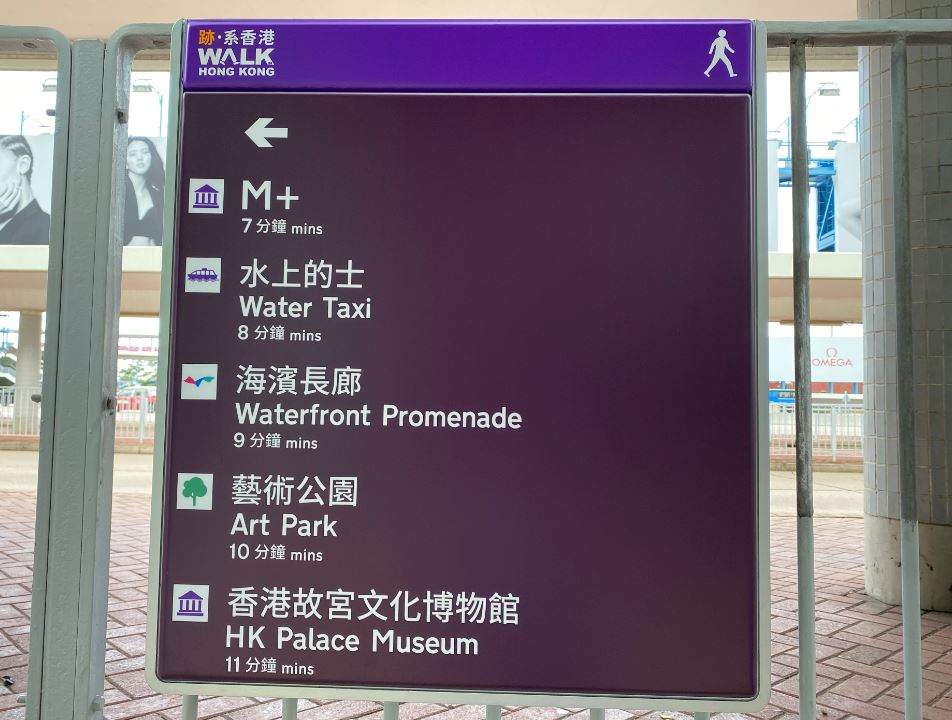 |
Showcase of a new pedestrian
wayfinding system
|
Decluttering of Non-Essential Traffic Signs and Railings
To reclaim space for pedestrians, thereby to foster a pedestrian-friendly environment, we decluttered non-essential traffic signs and adopted a minimum approach in the provision of pedestrian railings. About 290 non-essential traffic signs and 3.5 km of pedestrian railings in both the pilot areas of Central and Sham Shui Po were removed from 2019 to early 2021. The decluttering works will be further extended to other suitable locations progressively.
| Decluttering of non-essential "24-hour No-stopping Restriction" traffic signs in pilot areas |
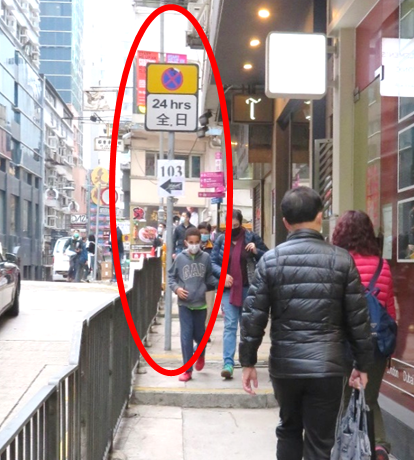 |
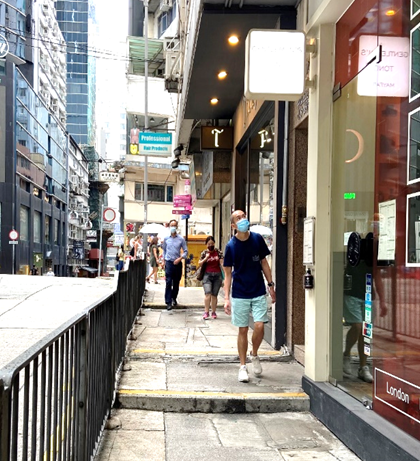 |
|
Before |
After |
| Decluttering of non-essential "Vehicles waiting will be prosecuted without warning" traffic signs in pilot areas |
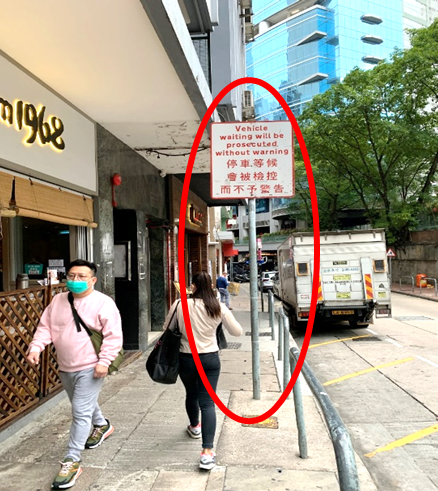 |
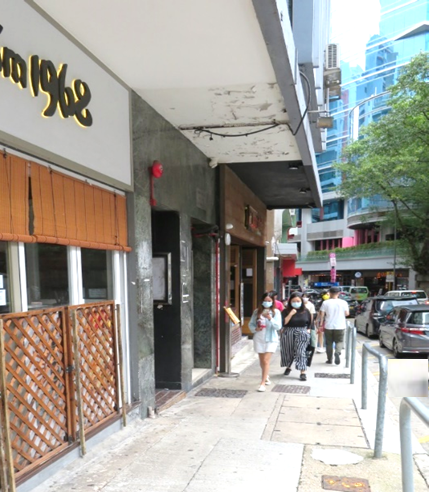 |
|
Before |
After |
| Decluttering of non-essential railings in pilot areas |
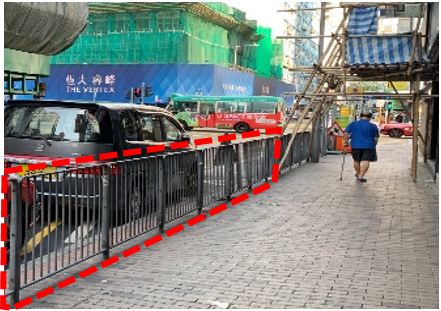 |
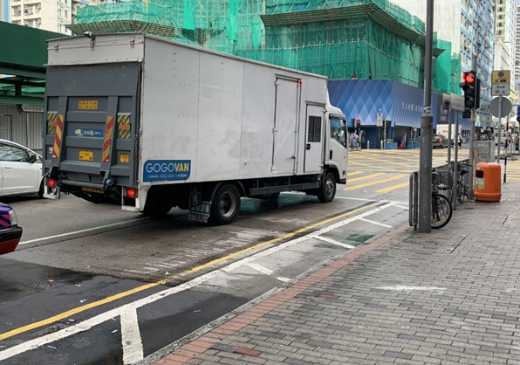 |
|
Before |
After |
Raised Crossing
Raised crossing provides a continuous flat surface for pedestrians to cross the road and encourages drivers to slow down to give way to pedestrians. It is safer and more comfortable for pedestrians to cross traffic routes. We conducted a trial of a new design of raised crossing on a bus route in Sha Tin. Colour dressing in reddish brown was applied to it to enhance drivers' awareness when passing the pedestrian crossing. Moreover, we have tested out the same type of raised crossing on a coach route at Chung Kong Road, Sheung Wan. We would continue to identify appropriate locations for further implementation.
| Trial of raised crossing at Yat Tai Street, Sha Tin |
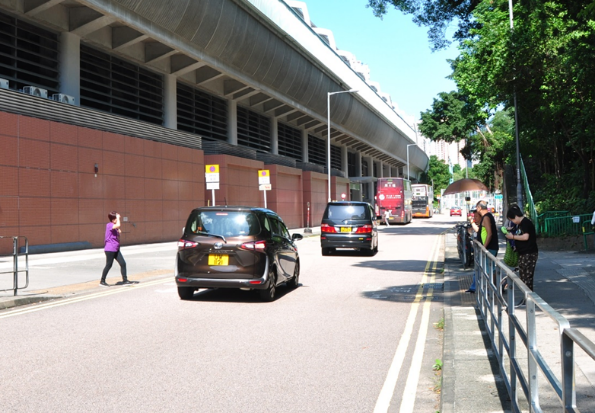 |
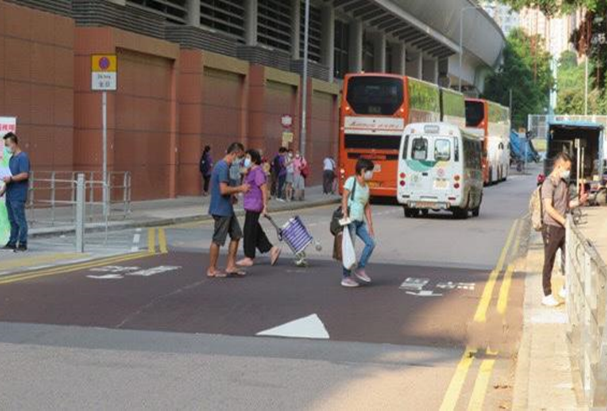 |
|
Before |
After |
| Trial of raised crossing at Chung Kong Road, Sheung Wan |
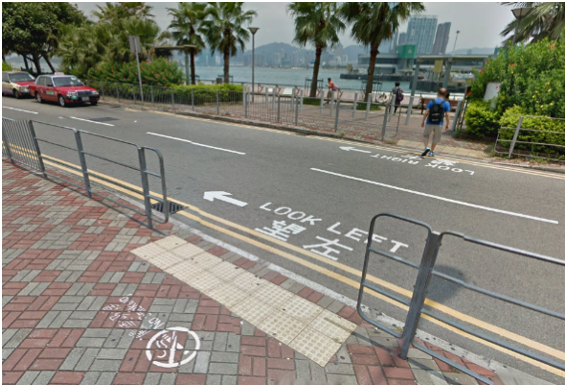 |
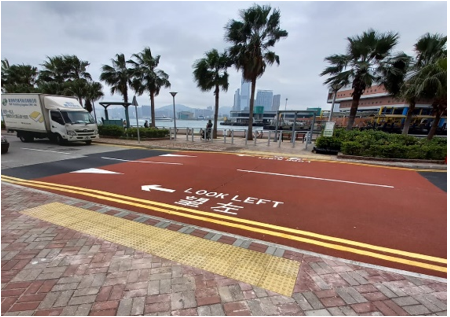 |
|
Before |
After |
Levelled Run-in/out
We are making attempts to refine the design of vehicular run-in/out so as to provide a continuous pedestrian way at uniform level, which is particularly more friendly to the elderly and mobility challenged as there is no level change when crossing the run-in/out, and making their journey more connected and enjoyable. We implemented trials of this new design at Shek Wu Hui Post Office in North District and Tuen Mun Siu Lun Government Complex in Tuen Mun. We would implement further trials at other suitable types of Government premises.
| Levelled run-in/out trial at Shek Wu Hui Post Office in North District |
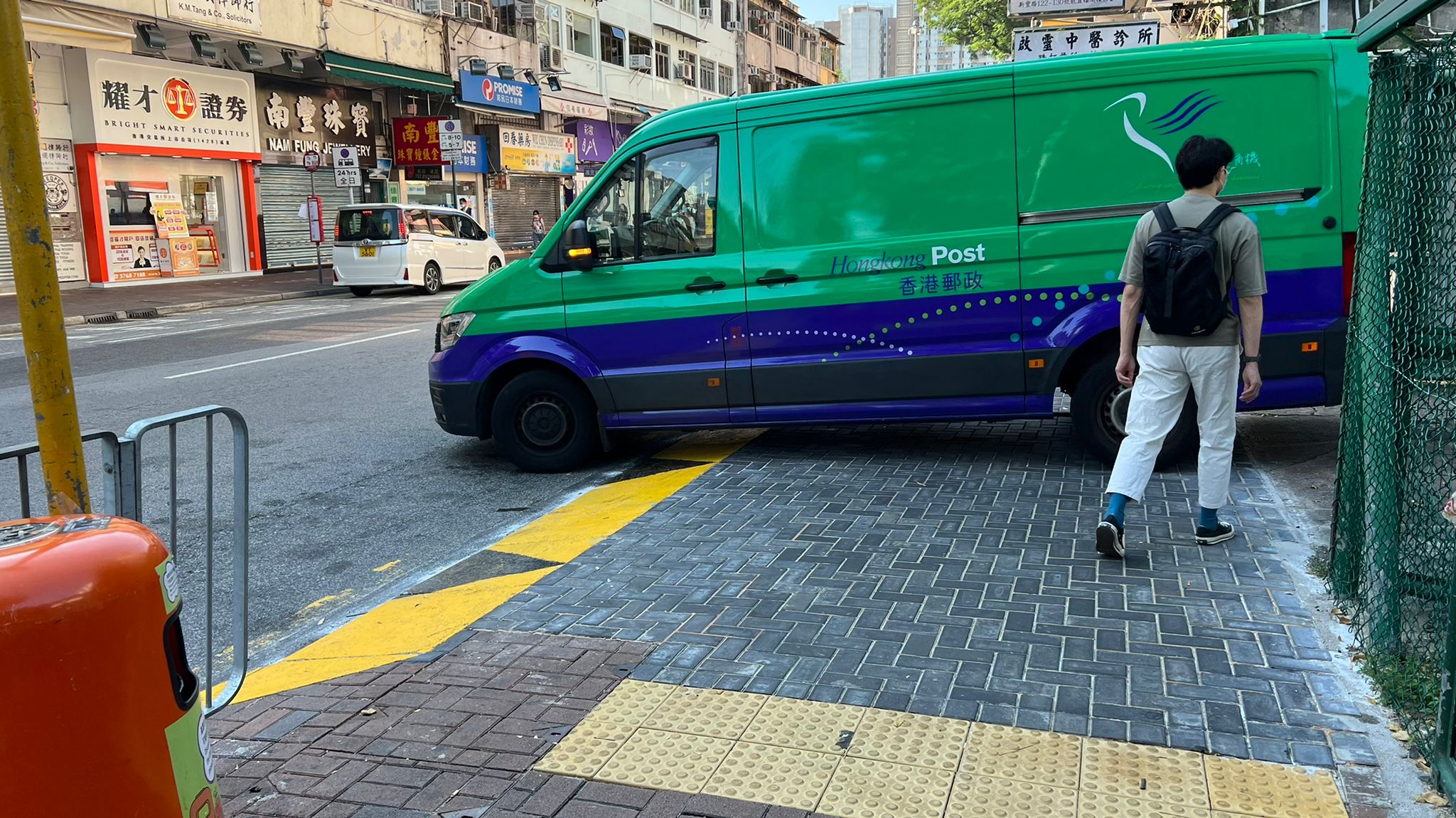
|
| Levelled run-in/out trial at Tuen Mun Siu Lun Government Complex in Tuen Mun |
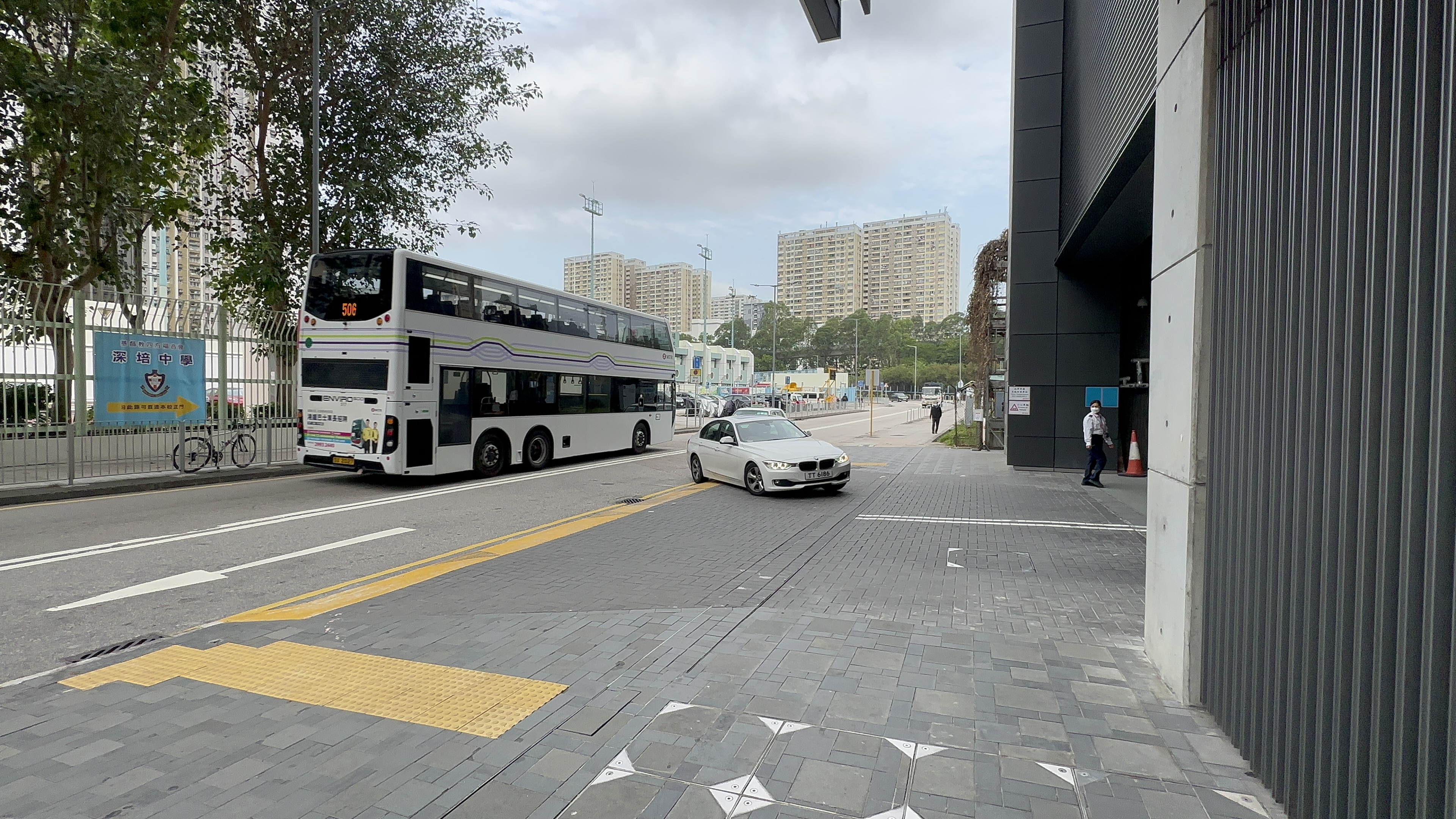 |
Low Speed Limit Zone
To enhance pedestrian safety and walking environment, we implemented a trial for low speed limit zone of 30km/h at a section of Wai Chi Street, Sham Shui Po in the neighbourhood of schools and public housing estates. A raised crossing with colour dressing was also built to calm the traffic, thus enhancing pedestrian safety and connectivity. We further implemented low speed limit zones in various streets, including Tong Yam Street in Sham Shui Po, Muk Hung Street in Kowloon City, On Shun Street and Po Shu Lane in Yuen Long, a section of Man Lai Road in Shatin, and sections of Tai Hong Street and Lei King Road in Eastern, progressively from end 2022. We would keep watch of and evaluate its effectiveness for considering extending this initiative to other suitable areas.
| Trial of low speed limit zone at a section of Wai Chi Street, Sham Shui Po |
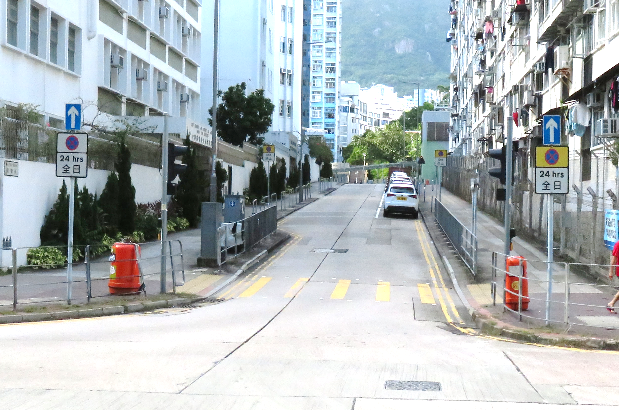 |
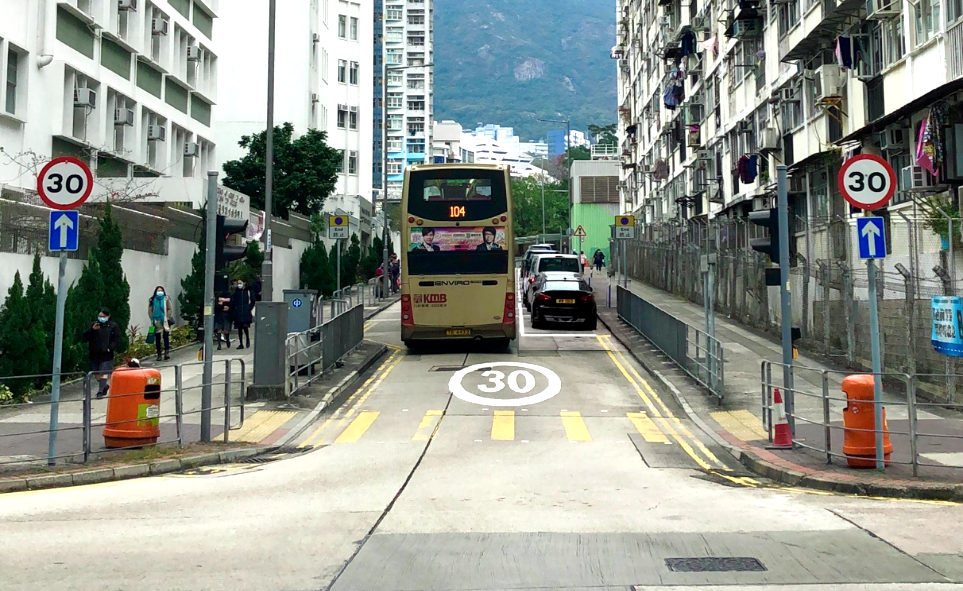 |
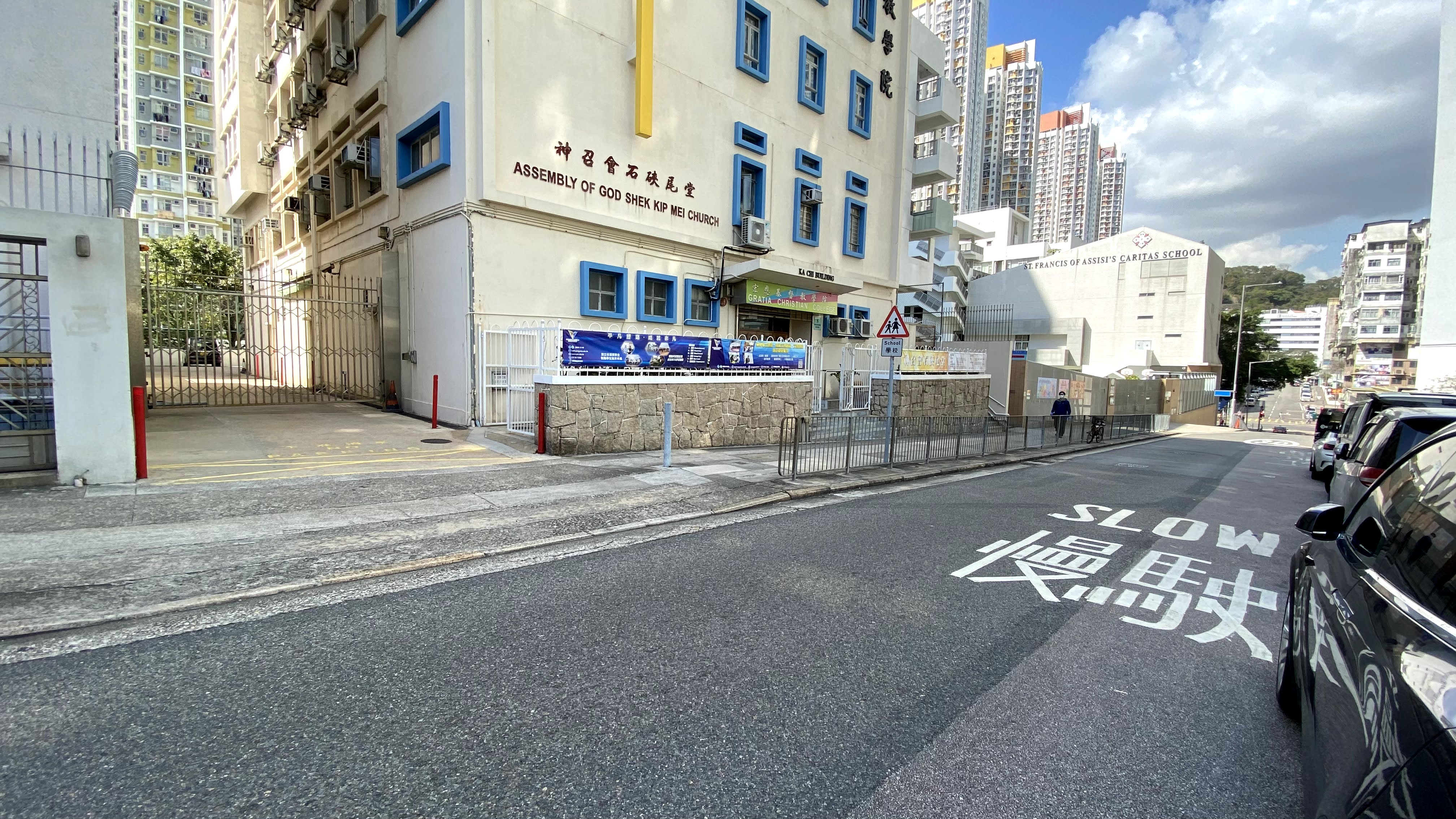 |
 |
| Before |
After |
3. Provision of Cover to Walkway
The initiative for the provision of walkway covers was extended to pedestrian connections to public hospitals in 2019. The alignments of walkway serving most of hospital staff and visitors travelling to and from the public transport facilities nearby are identified in consultation with the Hospital Authority. Once the alignments are determined, we would proceed to carrying out feasibility assessment for the provision of walkway covers, followed by implementation of the proposed measure.
4. Pedestrian Planning Framework
The overall walkability strategy deals with the three strategic spatial components, including (a) walkable central business districts; (b) walkable urban districts and towns; and (c) walkable green and blue links, to develop Hong Kong as a walkable city. We have developed a pedestrian planning framework based on a pedestrian-oriented approach, which integrates traffic, transport, land use and development projects. Simply put it, the pedestrian planning framework involves the following two key concepts:
| Urban Grid for Mobility: by recognising the relative priority for motorised transport and pedestrians in the respective parts of the road network as an urban grid with higher priority for vehicular movement in the outer grids and higher priority for pedestrians in the inner grids. |
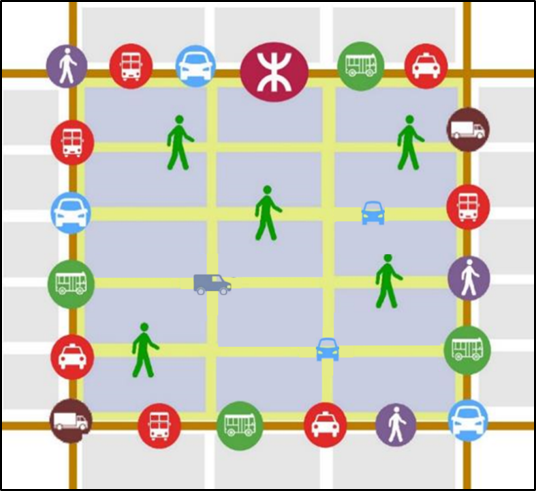
Illustration of urban grid for mobility
| "Link and Place" Typology: by recognising the two distinctive functions of individual pedestrian way as a "link" (i.e. facilitating movement of people from one place to another) and a "place" (i.e. serving as a destination itself) and identifying their significance together with the composite relative priorities for the "link" and "place" functions so as to meet the associated pedestrian needs. |
Illustration of "link" and "place" functions of pedestrian ways
["Link" function of pedestrian ways refers to pedestrians walking along footpath while "place" function refers to pedestrians clustering due to a place (e.g. retail, dining)]
The diverse nature of pedestrian ways could be classified into 9 typologies in accordance with its "link" and "place" significance. Coupled with the recommended walkability enhancement measures under each typology, individual pedestrian way can be planned and designed according to its functions and characteristics.
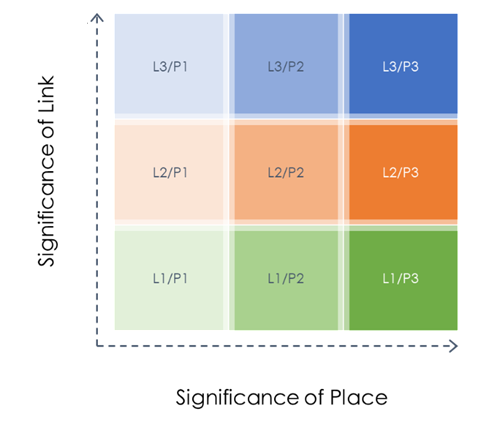
"Link ('L') and Place ('P')" Typology for pedestrian ways
For example, a street having both high "link" and "place" significance ("L3/P3" street typology) may be a crucial pedestrian link as well as a key destination in district centre. Major walkability enhancement measures could be planned for such kind of street to provide a pleasant walking environment whilst accommodating efficient movement of pedestrians. On the other hand, a street having both low "link" and "place" significance ("L1/P1" street typology) may be a local street where safe and easy access for pedestrians is required. The recommended walkability enhancement could be of smaller scale such as improving lighting in lanes.
Suitable walkability enhancement measures, such as footpath widening, built-outs or building set-back to increase pedestrian space, provision of building canopies to improve weather protection, low speed limit zone to enhance pedestrian safety, etc. would be considered when applying the link and place concept in the pedestrian planning process.
| Footpath widening at Jaffe Road, Wan Chai |
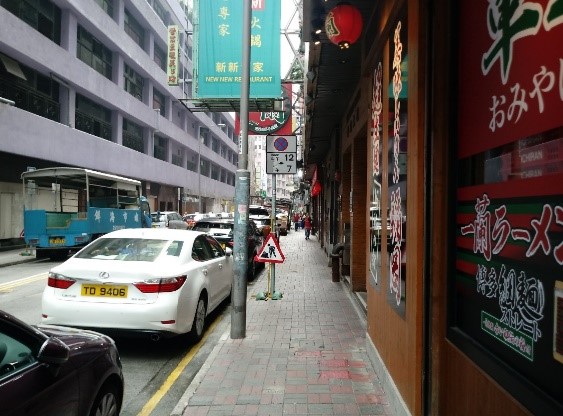 |
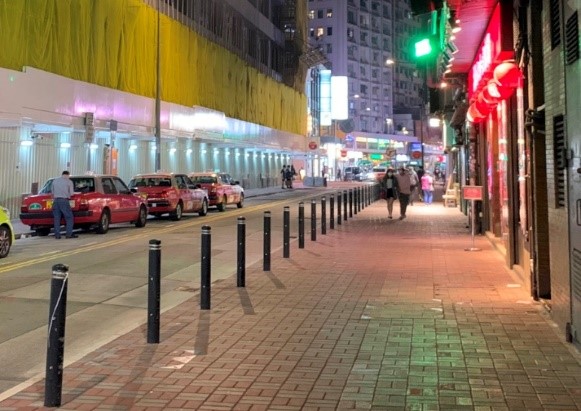 |
|
Before |
After |
The minimum footpath width standard which provides design guidelines on the minimum spaces required for building frontage, pedestrian through movement as well as street furniture and greening has also been refined to integrate the relative priorities for the "link" and "place" functions.
The pedestrian planning framework adopts a plan-based approach which integrates the four pillars of walkability for planning, design, management and upkeep of the pedestrian realm and pedestrian improvement measures. It provides guidelines for designing suitable pedestrian improvement proposals at the district and local levels.
5. Implementation Arrangement
We have tested out some of the new walkability initiatives along the four pillars of walkability at various locations to create a pedestrian-friendly environment which encourages people to walk more and enjoy walking. We would continue to identify appropriate locations for implementation of walkability enhancement measures by taking into account the needs of local communities and businesses, local characteristics, and relevant walkability issues with due regard to street management and impact on traffic.
In particular, we will seek opportunity to apply the pedestrian planning framework including the link and place concept for pedestrian planning in collaboration with relevant departments in the planning of new development areas and in suitable built up areas.
Drawing on past experiences and evaluation results of on-going trials of new walkability enhancement measures, we are in the process of updating relevant guidelines and manuals with a view to achieving wider application in the long run.
Walk in HK
















